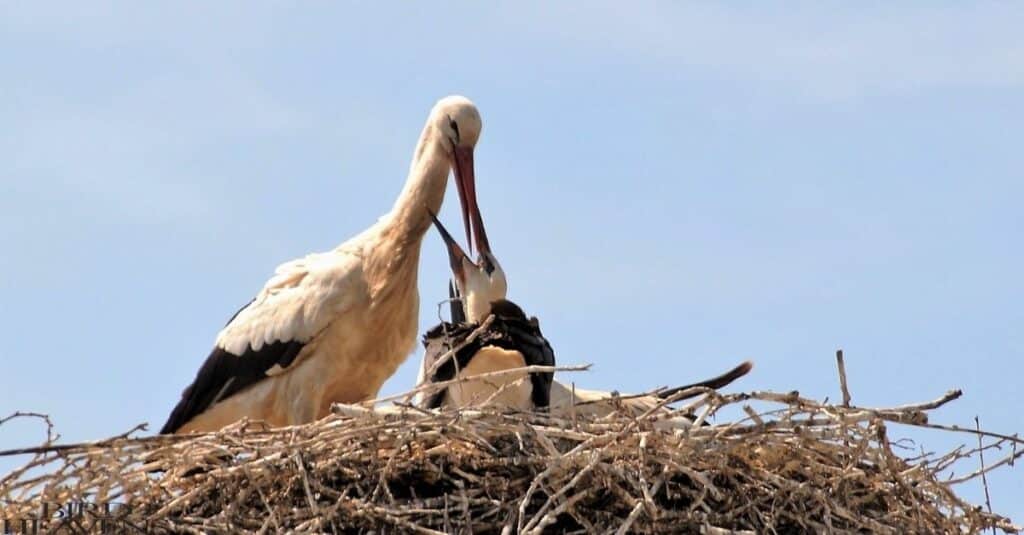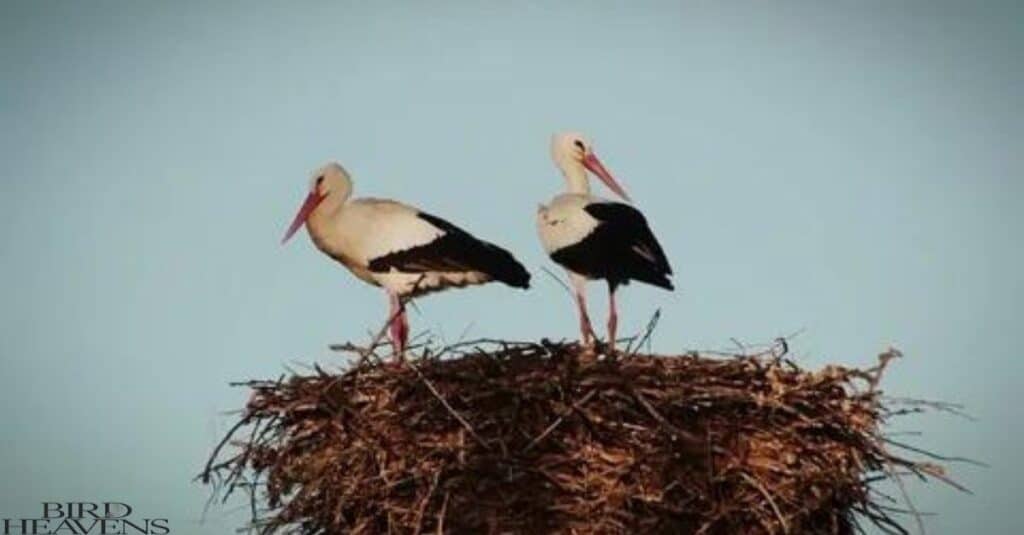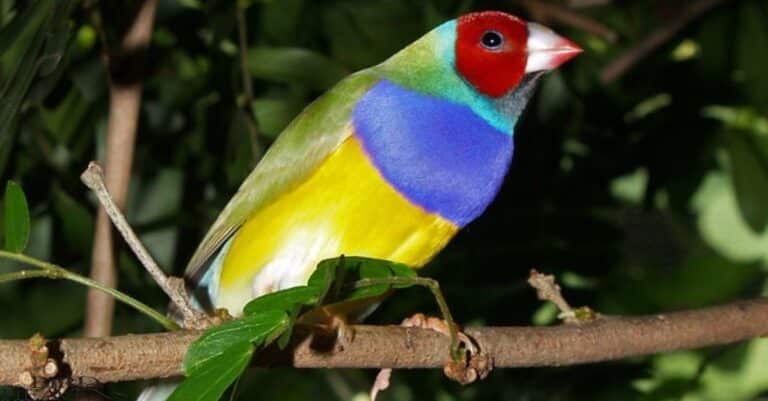Why Do Storks Kill Their Young – Deadly Stork Secrets
Storks kill their young due to environmental pressures and survival instincts. Food scarcity, harsh weather, and limited resources drive them to eliminate weaker chicks.
This ensures stronger offspring survive, maintaining genetic quality. It’s a natural strategy to adapt to challenging conditions, balancing population size with available resources. While brutal, it’s crucial for species survival.
Do Storks Kill Their Young?
Parental infanticide in storks isn’t just a random act of cruelty. It’s a calculated survival strategy that has evolved over thousands of years. This behavior is observed in several stork species, including the well-known White Stork (Ciconia ciconia) and the imposing Marabou Stork.
Species Known for Infanticide
While not all stork species regularly practice infanticide, it’s been well-documented in several:
- White Storks
- Marabou Storks
- Wood Storks (Mycteria americana)
- Black Storks (Ciconia nigra)
Each of these species has its own unique circumstances and triggers for infanticidal behavior, which we’ll explore in more detail.
Key takeaways:
- Stork infanticide is a response to environmental pressures, particularly food scarcity and harsh weather conditions.
- It ensures the survival of the fittest offspring, contributing to the long-term health of stork populations.
- The behavior varies among species and conditions, reflecting the diverse adaptations of storks to their specific habitats.
- Understanding this behavior is crucial for conservation efforts, helping us develop more effective strategies for protecting these iconic birds.
Reasons Behind Storks Deadly Decision:
Understanding these reasons is crucial to grasping the full picture of stork behavior and the deadly stork secrets that have puzzled researchers for years.

1.Environmental Factors
Food Scarcity
One of the primary reasons storks might resort to infanticide is a lack of food. When resources are scarce, parents may choose to sacrifice some chicks to ensure the survival of others.
This brutal calculus of survival plays out in stork nests around the world, particularly in areas prone to drought or overfishing.
| Year | Average Rainfall (mm) | Fish Population (per km²) | Infanticide Rate |
| 2018 | 800 | 5000 | 5% |
| 2019 | 600 | 3500 | 12% |
| 2020 | 400 | 2000 | 25% |
Extreme Weather Conditions
Harsh weather can also trigger infanticidal behavior. During prolonged droughts or unusually cold spells, storks may eliminate some chicks to increase the chances of survival for the remaining offspring.
This adaptation allows stork populations to weather environmental challenges that might otherwise decimate entire generations.
2.Biological Drivers
Ensuring Survival of Stronger Offspring
Storks often practice what’s known as “brood reduction.” This involves eliminating weaker chicks to channel more resources to the stronger ones, increasing their chances of survival.
From an evolutionary perspective, this strategy maximizes the likelihood of passing on the strongest genes to the next generation.
Genetic Quality Control
In some cases, storks may kill chicks that show signs of genetic abnormalities or weakness, essentially acting as a form of natural selection.
This brutal but effective mechanism helps maintain the overall health and resilience of stork populations in the wild.
How Storks Eliminate Their Young?
The methods by which storks kill their young can be disturbingly efficient. There are two primary ways this occurs, each with its own set of behaviors and implications for chick survival.
Siblicide: When Chicks Attack Each Other
In many cases, the parents don’t directly kill the chicks. Instead, they allow and sometimes encourage sibling rivalry to turn deadly. This form of indirect infanticide is common among many bird species, including storks.
- Pecking Order: Larger, stronger chicks may peck or push smaller siblings out of the nest. This behavior establishes a clear hierarchy within the nest, with the strongest chicks dominating access to food and parental care.
- Food Deprivation: Parents may preferentially feed stronger chicks, leading to the starvation of weaker ones. This selective feeding reinforces the size differences between chicks, further disadvantaging the smaller siblings.
Parental Intervention: Direct Action by Adult Storks
Sometimes, adult storks take matters into their own hands (or beaks, rather). This direct form of infanticide is less common but has been observed in several stork species:
- Ejection from the Nest: Parents may physically remove a chick from the nest, leaving it to die on the ground. This quick and decisive action eliminates competition for resources within the nest.
- Deliberate Injury: In rare cases, adults have been observed directly attacking and killing their young. While shocking to human observers, this behavior can be seen as a merciful alternative to slow starvation.
Chicks Selection Criteria For Elimination:
How do storks decide which chicks to eliminate? The process is ruthlessly efficient and based on several factors that have been honed by millions of years of evolution.

Size and Health of Chicks
- Larger Chicks: Generally have a better chance of survival. Their size advantage allows them to outcompete smaller siblings for food and attention.
- Visible Health Issues: Chicks showing signs of illness or deformity are often the first to go. This natural culling helps prevent the spread of disease within the nest and ensures that limited resources are not wasted on chicks unlikely to survive to adulthood.
Timing of Hatching and Its Impact
Storks practice what’s known as asynchronous hatching. This means eggs in a clutch hatch at different times, creating a natural size hierarchy among chicks.
- First-Hatched Advantage: Earlier-hatched chicks are usually larger and stronger, giving them a significant edge in competition for resources.
- Last-Hatched Disadvantage: The youngest chicks are often the most vulnerable to elimination. Their smaller size and delayed development make them easy targets for siblicide or parental neglect.
You Might Like >>Why Are House Sparrows Bad?
The Nest: A Battleground for Survival
A stork’s nest is more than just a home; it’s an arena where life-and-death struggles play out daily. Understanding the dynamics within the nest is crucial to grasping the full picture of stork infanticide.

Nest Dynamics and Hierarchy
- Size Matters: Larger chicks dominate feeding times and prime positions in the nest. This dominance reinforces their size advantage, creating a feedback loop that further disadvantages smaller siblings.
- Parental Attention: Parents often focus their care on the most aggressive or vocal chicks. This behavior, while seemingly unfair, helps ensure that the strongest offspring receive the resources they need to survive.
Factors Influencing Chick Removal from the Nest
- Nest Size: Overcrowded nests may lead to more frequent infanticide. Limited space can exacerbate competition between chicks and increase the likelihood of accidental falls or deliberate ejections.
- Food Availability: When food is scarce, competition in the nest intensifies. Parents may be more likely to practice selective feeding or even direct infanticide during times of shortage.
- Parental Experience: Younger, inexperienced parents may be more likely to resort to infanticide. As storks age and gain experience, they often become more adept at balancing the needs of multiple chicks.
You Might Like >>Finches in North Carolina
Storks Overproduction Strategy:
Storks have evolved a counterintuitive strategy to deal with the harsh realities of their environment: they overproduce. This approach to reproduction is a key aspect of stork behavior that helps ensure the survival of their lineage.

Laying More Eggs Than Intended to Raise
Storks typically lay 3-5 eggs, even though they rarely raise more than 2-3 chicks to fledging. This overproduction serves several important purposes in the stork’s reproductive strategy.
Benefits of Overproduction:
- Ensures at least some offspring survive if conditions are poor
- Allows for selection of the strongest chicks
- Provides “backup” chicks if older ones die
Risks:
- Increased energy expenditure for the female
- Potential for all chicks to die if resources are too scarce
This strategy of overproduction is a prime example of how evolution has shaped stork parenting to maximize the chances of successful reproduction in unpredictable environments.
You Might Like >>Why Do Geese Honk When They Fly
Species-Specific Behaviors:
While infanticide occurs in many stork species, the frequency and methods can vary significantly. Understanding these differences is crucial for conservation efforts and provides insight into the diverse adaptations of stork species around the world.
White Storks vs. Marabou Storks
White Storks:
- More likely to practice siblicide
- Often lay 4 eggs but typically raise 2-3 chicks
- Widespread across Europe and parts of Asia
Marabou Storks:
- Known for more direct parental infanticide
- Usually lay 2-3 eggs and often raise only one chick
- Native to sub-Saharan Africa
These differences in reproductive strategies reflect the unique environmental pressures faced by each species in their native habitats.
Variations in Infanticide Rates Among Different Stork Species
There are some variations in infanticide rates among different stork species:
| Species | Average Clutch Size | Typical Survivors | Infanticide Rate |
| White Stork | 4 | 2-3 | 25-50% |
| Marabou Stork | 2-3 | 1 | 50-66% |
| Wood Stork | 3-4 | 1-2 | 33-50% |
| Black Stork | 3-5 | 2-3 | 20-40% |
Conservation Implications:
Understanding stork infanticide is crucial for conservation efforts. This behavior has significant impacts on stork populations and raises questions about human intervention in natural processes.
Impact on Stork Populations
- Natural Population Control: Infanticide can help regulate stork numbers in response to environmental conditions. This self-regulating mechanism helps prevent overpopulation in resource-limited areas.
- Vulnerability to External Pressures: High infanticide rates can make populations more susceptible to other threats like habitat loss or climate change. Conservation efforts must take this into account when developing protection strategies.
Human Interventions: Pros and Cons
Pros of Intervention:
- Increased survival rates of chicks
- Potential to boost declining populations
- Opportunity to study stork behavior in controlled environments
Cons of Intervention:
- Disruption of natural selection processes
- Possible overpopulation in resource-limited areas
- Risk of creating dependency on human intervention
Conservation isn’t just about increasing numbers. It’s about maintaining the delicate balance of nature.- Dr. George Schaller
Case Study: Forest Storks
In Poland’s Białowieża Forest, researchers have been studying White Stork populations for over 50 years. Their findings provide valuable insights into stork infanticide and its relationship to environmental factors:
- Observation: In years with heavy rainfall, infanticide rates dropped by 30%
- Reason: Increased rainfall led to more abundant food sources (frogs, insects)
- Outcome: More chicks survived to fledging in wet years
You Might Like >>Do Robins Mate For Life
The Role of Storks in Ecosystems:
While the focus of this article has been on the darker aspects of stork behavior, it’s important to recognize the vital role these birds play in their ecosystems. Storks are not just fascinating subjects of study; they are integral components of the environments they inhabit.

Ecological Importance
- Pest Control: Storks consume large quantities of insects, helping to control pest populations in agricultural areas.
- Wetland Health: As top predators in many wetland ecosystems, storks help maintain the balance of fish and amphibian populations.
- Nutrient Cycling: Stork droppings contribute to nutrient cycling in their habitats, particularly in and around water bodies.
Cultural Significance
Storks have long held a special place in human culture and mythology. From the folklore of baby-delivering storks to their status as symbols of good luck in many societies, these birds have captured human imagination for centuries. This cultural importance can be leveraged for conservation efforts, helping to garner public support for stork protection initiatives.
You Might Like >>Vultures In Texas
Conclusion:
Stork infanticide, though shocking, shows how nature works to help animals survive. When food is scarce or conditions are tough, storks may kill weaker chicks to make sure the strongest ones live.
This happens differently depending on the species and their environment. Studying this helps us learn more about birds and their habitats. It also shows how important it is to protect natural spaces so animals can survive and adapt to challenges.

Andrew Paul is a renowned ornithologist and founder of Bird Heavens. With my extensive expertise in bird behavior and habitat preservation,I will insightful content on species identification and conservation.My Future plans include interactive workshops and online courses to foster a global community of bird enthusiasts committed to conservation and appreciating avian life. Join me at Bird Heavens







